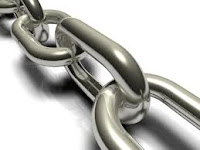 |
| Internal Linking Structure |
A website’s internal linking structure is a crucial part of the overall SEO strategy. Whether it is the end user or the search engines, it is important to optimize a site’s internal structure for maximizing the benefits. If you plan to obtain high rankings in search engines, you need to effectively plan your website’s internal linking structure, also termed as a website’s navigational structure or site architecture. The inner structure of the site must be planned adhering to the usability guidelines as well as the best search engine optimization practices.
Given below are 8 important tips to help you plan an inner structure which conforms to both usability guidelines and SEO.
1. Link Categorization
This site feature is technically termed as ‘navigability’. While developing a website for success, you should pay careful attention to the categories and subcategories that you create. All the internal linking on your site should be ‘relevant’. The link structure should be appropriately optimized, both for people and search engines. Keep the ‘task flow’ alive throughout the site.
2. Anchor Text
The next important thing that you need to consider is the anchor text linking of your website. Today’s users are smarter. Anchor text links like ‘Click Here’ are almost dead. Webmasters should try to use anchor text that entice users to click links. You should use call-to-action anchor text like ‘creating an ad campaign’, ‘improve direct mail response’, ‘designs that really work’ etc.
3. Redundancy
Here, redundancy refers to repetition of links. You should not link the same page double or three times from the same place. For example, placing a ‘Read More’ link under a post title which already links to the corresponding page is redundancy. You should either link the post title (that appears on a list) or provide a ‘Read More’ or ‘Continue Reading’ link at the end of the two- or three-liners. Choose any one of the two options.
4. No-follow Attributes
While setting up the internal structure of a website, you will come across multiple links which are not so important. There may be some page links to which you do not want to pass on page rank. How do you solve this? For the very purpose, you have the no-follow tags available to you. Use these no-follow tags to your benefit and keep the search engines well informed.
5. Sitemap
An important part of a site’s internal link structure is the creation of a well-defined sitemap. A sitemap keeps informed both search engines and people. It is a good idea to create both – a static sitemap (for users) and an XML sitemap (for search engines). Since well-explained sitemaps keep the search engines informed, it also helps obtain higher rankings.
6. Accessibility
Do not bury important web pages in deep links. Both in terms of usability guidelines and SEO, all the important pages on your site should not be more than two clicks away from the homepage. Search engines love to visit pages that are easily accessible from the website’s homepage.
7. Dangling Links
Do not have web pages that prove to be a dead-end for users. Would you like the search engine spider to crawl a page which has ‘nowhere to go’? These links can be termed as dangling links. If you have such pages on your site, you need to optimize them appropriately to improve the inner link structure.
8. Broken Links
Keep a close watch on all the internal links of your website to keep them error-free. Make sure your site does not have any error pages like 404 or ‘Not Found’. There are various tools that you can use to detect such pages on your website. Fix these error pages as soon as you find them.


1 comments:
Nice update..
Yes, you are right.. A website’s internal linking structure is a crucial part of the overall SEO strategy. And through this post you define it very well. Thanks..Looking forward to read more..
Post a Comment